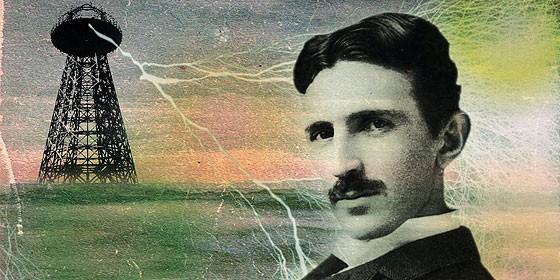
The October and November Pulse presented the text of two of the four short talks that our members gave at the Tesla 160th Birthday Event hold at the Tesla Science Center at Wardenclyffe in Shoreham on July 10, 2016. The test of the talk that the third speaker, Milutin Stanacevic gave is presented below.
Dr. Stanacevic is an Associate Professor in the Electrical and Computer Engineering Department at Stony Brook University. He has told me that while growing up in Serbia, Tesla was a role model for him. He often apprises his students of Tesla’s contributions.
Next month’s Pulse will feature the text of the final talk by our Section’s Secretary, Pulse Editor and Chair of the Computer Society Chapter, Davor Dokonal.
Tesla and Wireless Power Transfer
Milutin Stanaćević
We know what Tesla’s work has brought us through the last hundred years. He has been recognized for the alternative current power supply system and the transfer of the electrical energy into mechanical energy through AC motors. But what the future holds for Tesla’s work? How the future implementations of his ideas and concepts that he introduced would affect our daily lives? Based on the current direction of the technology, we can already anticipate that his influence will only grow bigger.
Tesla’s contributions to the wireless technology have already been significant. He was the first to introduce the remote control and had great impact on the development of the radio technology. Although, he was not the first one to demonstrate the radio transmission, he was the first one to envision the wireless transfer of information. While one of the most important technologies of the 20th century has been the wireless transmission of information, wireless transmission of power could be the technology that would become ubiquitous in the 21st century. Imagine all of our gadgets, like cellphones, tablets,laptops being powered remotely, and then move to the cars and the planes. Tesla not only envisioned this technology, but we can speculate that development of this technology was his greatest goal. He rightly anticipated the potential impact of this technology on humanity. How far he has gone in the development of this technology and could his ideas be explored in the future?
Let us remember one of the first Tesla’s demonstrations. Through the use of resonant coils, known as Tesla’s coils, he was able to turn on the light bulb from one end of the
laboratory to the other end of the laboratory. His work on the wireless power transfer through resonant coils, the idea of inductive coupling between tuned transmitting and
receiving circuit, is the founding principle and the bases of the current research efforts into small and mid- range wireless power transfer. This idea has been explored for
powering the implantable devices in body now for nearly fifty years, with the cochlear implant being the first commercial implantable device that does not require wires through the skin. The transfer of power to different implantable devices is still actively researched by many renowned scientists and the impact of this technology on medicine will be significant. We also have the first commercial products for recharging our cell phones at very short distances. We can, with great degree of certainty, predict that the inductive coupling technique, as proposed and demonstrated by Tesla, will be used in many other applications for wireless powering in the small and mid- range.
What is still unknown is will we be able to use Tesla’s ideas to achieve power transfer at the longer distances? Although Tesla was not able to fully demonstrate the long range
power transfer, we know that his ideas and theory are scientifically sound. We know that he was able to calculate the resonant frequency of Earth precisely, one of the facts that
demonstrate that he was not only the great innovator and the experimentalist, but the great scientist. We know that the obstacle for the practical implementation of his idea is
in the efficiency of the antennas that can be designed. Will this problem be solved in the future, we don’t know, but we can be certain what impact this would have on our society.